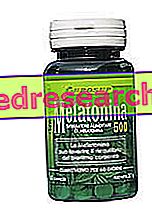A variable pain
Although toothache is an extremely variable and subjective symptom, it is possible to evaluate the different types of pain based on the cause of origin.

Depending on the nature of toothache, the pain felt can take on a different connotation. For example, sometimes the toothache manifests itself progressively, while on other occasions it begins suddenly. Again, if sometimes you can control with pain medications, often the toothache is so alive and pounding that not even the common analgesics are able to stop the torment. In milder cases, toothache is perceived only in certain specific conditions: for example when taking food that is too hot or iced, or salty or high in sugar. In the latter case, more than a toothache properly so called, the discomfort perceived in response to thermal or chemical stimuli translates more correctly into dentinal hypersensitivity.
Interpreting toothache
Given that every form of toothache presupposes the need to undergo an adequate dental examination, for a preliminary self-diagnosis of the disorder it is important to know how to interpret the signals that the organism sends us.
To assess toothache, it is necessary to consider some important parameters:
- Pain intensity (tolerable, acute, excruciating, unbearable)
- Location of toothache (affects a canine, a molar, a wisdom tooth, involves more teeth, etc.)
- Frequency: pain is continuous or intermittent
- Possible accentuation of pain with hot, cold, bitter, salty, acidic, sweetened foods ...
- Onset speed (sudden, progressive pain)
- Co-presence of satellite symptoms such as gum bleeding, fever, bad breath, etc.
Knowing how to recognize the type and intensity of toothache, as well as being able to place pain in a certain area of the dental arch is important to get an idea, however general, about the disorder that could be hidden behind a toothache . But that is not all. Knowing how to describe pain in its own words can be extremely useful for the doctor, who can thus put a diagnostic hypothesis in a more convenient way already starting from the anamnesis, or from the analysis of the symptoms reported by the patient.
Hypotheses on the causes
The table shows the main characteristics of toothache, distinct on the basis of the triggering disorder.
Description of toothache | Possible hypothesis on the causes |
| The description of toothache suggests a PULPITIS, a common complication of caries in the advanced stage not adequately cured by filling. |
| From the analysis of the symptoms we can hypothesize a GINGIVITIS. Inflammation of the gums could be a soon solvable phenomenon or conceal an infection still in the asymptomatic stage. |
| Symptoms suggest a dental implant in progress. |
|
|
| The symptomatology just described makes one think of a CARIE: initially, caries does not cause any symptoms. As the bacteria go deep, creating an important lesion, the symptoms progressively increase. |
| Typical case of ALVEOLITE toothache. Even today this type of toothache is quite common after a dental avulsion operation. Fortunately, the pain resolves within 7-15 days from the day of the operation. |
| The cause essentially depends on the TRAUMA suffered. The origin of toothache is not infectious. |
| The most obvious response to these symptoms is the imminent growth of the TOOTH. |
| If the toothache resolves completely after a couple of days from the WHITENING procedure, the cause lies in the temporary hyperemia suffered by the dental pulp |
| In all likelihood, toothache finds explanation in a SINUSITE. In this case, toothache does not present an infectious origin. |
| The symptoms described above presume a toothache that recognizes BRUXISMO (uncontrolled dental grinding) as the main causative agent |



